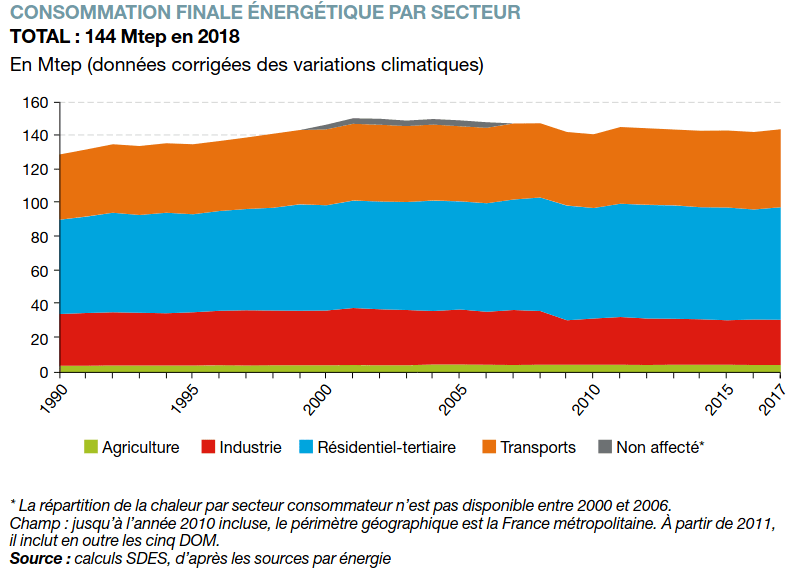Internship Report
1. Introduction
1.1. Scientific Context
The reducing of energy consumption is a great challenge of our century. After the Paris Agreement COP21 (2015), lot of countries promise to reduce theire energy consumption (référence wiki). The first energy consumer sector in France is the residential buildings, precisely the building heating (référence chiffres clés de l’énergie).

To reduce the energy consumption of residential building, it is necessary to understand the heat transfert in building and modelize it.
It exist three types of heat transfert in building :
-
conduction (close to close transfert) for example heating your neighbors
-
convection (movement of material) for example opening a window
-
radiation (by electromagnetic wave) for example the light of the sun
In this stage, we focus on radiation. What the impact of radiation in the temperature of building ?
1.2. Project Context
The stage is the a stage of two month for Master 1 of CSMI (Calul Scientifique et Mathématiques de l’Information). This training forms mathemacian with double skill in mathematic and informatic apply in concret problems.
The stage takes place in CEMOSIS in the team Synapse. CEMOSIS (Centre de modélisation et de simulation Strasbourg) is technological platform in mathematics at the university of Strasbourg. CEMOSIS was created in January 2013(référence) in the institute IRMA (Institut de Recherche Mathématique Avancée). CEMOSIS works on modeling simulation, in data science or high performance computing.
The team Synapse works in project 4fastsim-ibat to modelize the consumption in building. This project will make it possible to accelerate the identification of energy saving. The goal of the project : * Develop a Building Information Model (BIM) for existing building * Develop fast 3D thermal management model using IA adn Physics * Use sensors deployed in IBat platform The project have acces to sensors of IBat platforms, a building filled with sensor located in Illkirch-Graffenstaden. The team use different tools, data science or modeling simulation to predict a ernergy consumption.
1.3. Objectives
The objectives of the stage is to understand and synthetise the documentation on radiative heat transfert and documentation on methodology of numerical resolution of radiative heat transfert (the Monte Carlo method) and modelise and implement the radiative heat transfert in the case of building.